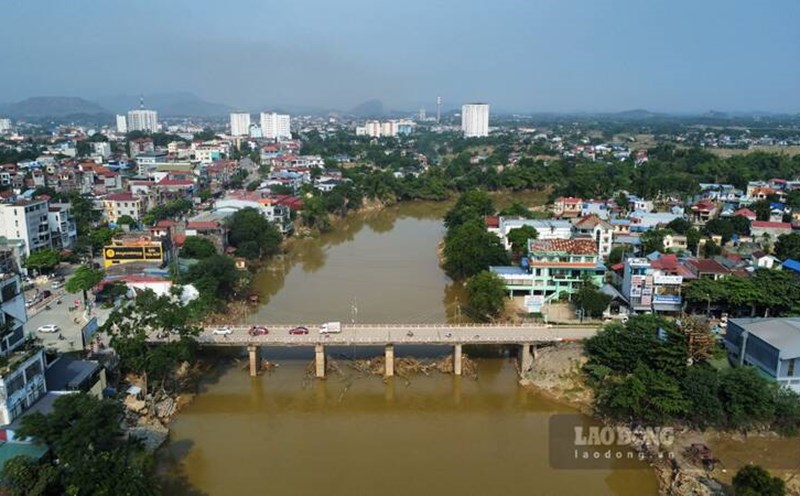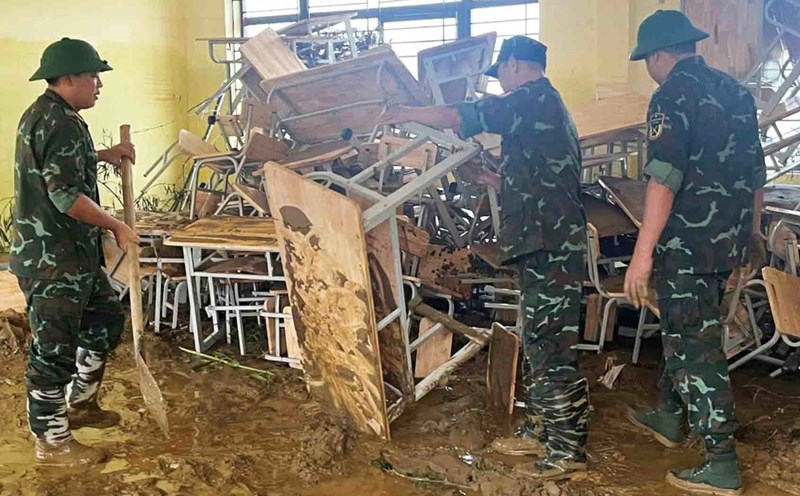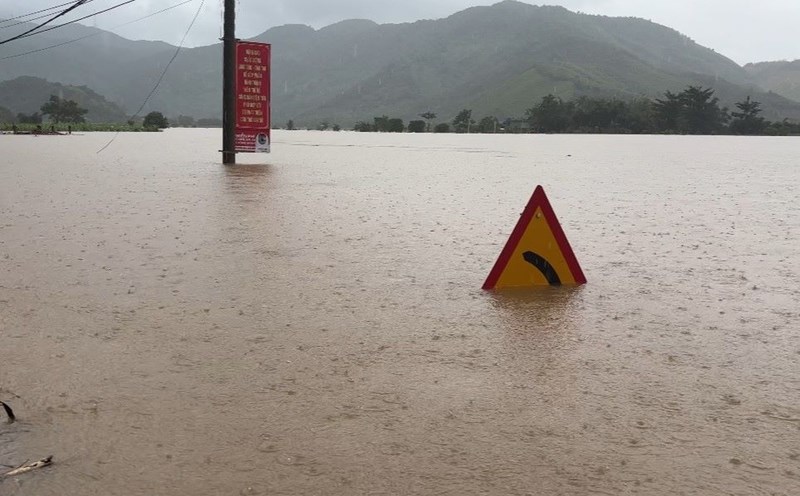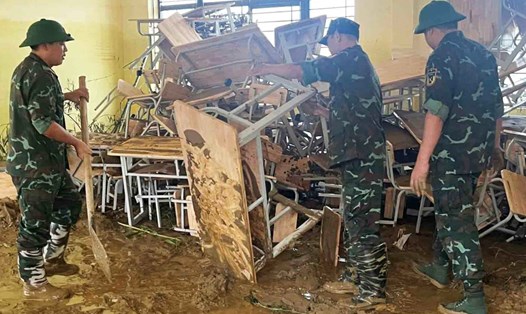Standing in front of a muddy peach garden, Ms. Ngo Thi Nhi (Group 4, Cam Gia Ward, Thai Nguyen) silently looked at thousands of ancient peach trees that died after the historic flood, covering their entire capital and efforts all year long, now with only mud and tree roots left.
Nearly two types of peach land, more than a hundred chickens and five hectares of rice fields of her family now only have a few bags of rice, a few pigs can run up to the temporary dike to take shelter in the bamboo bushes.
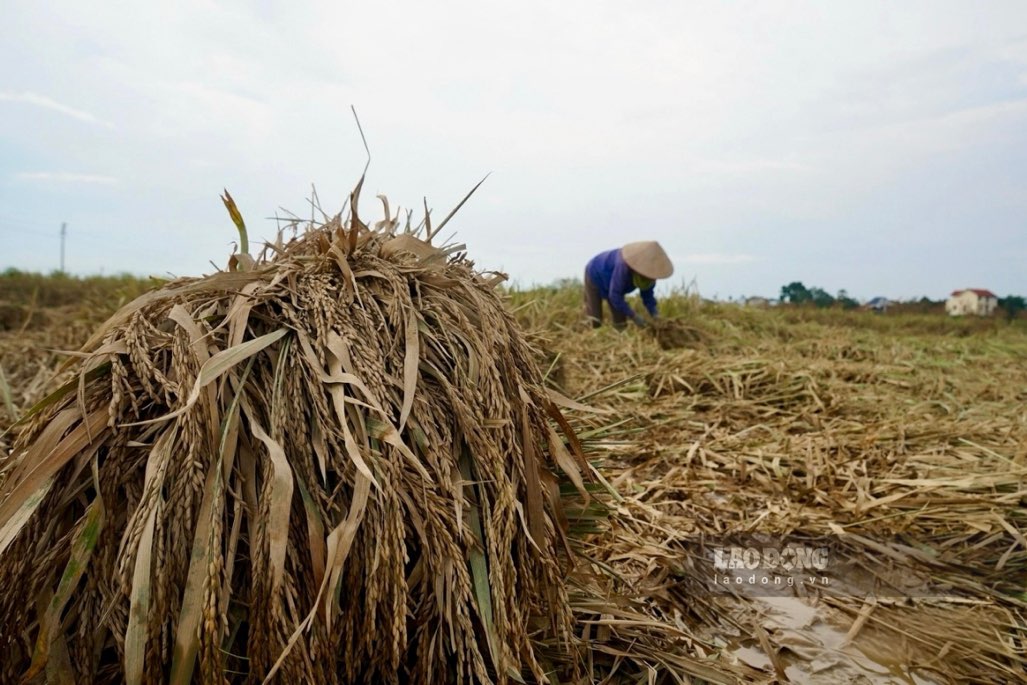
Ms. Nhi's family is one of the largest peach growers in Cam Gia peach village, with thousands of ancient trees for rent during Tet, some of which are for rent at 15 million VND/group.
With just the money to buy peach embryos, she has invested more than a billion VND, not to mention the cost of fertilizer, labor to strip leaves and monthly care for nearly a year.
Last year, Typhoon Yagi caused her family to lose more than 700 million VND, this year the floodwaters after Typhoon Matmo in early October 2025 continued to sweep away all remaining capital.
"I thought the flood would stop, who would have thought that this year the water would rise higher, the water would flow more rapidly, the peach trees would die, and no tree would survive," Nhi said sadly.
Not far away, Ms. Phung Thi Minh Hong - Head of the Farmers' Association of Cam Gia Group 4 - is also clearing each broken peach tree, the bonded branches of the phoenix tree that were left behind like a pile of dry firewood.
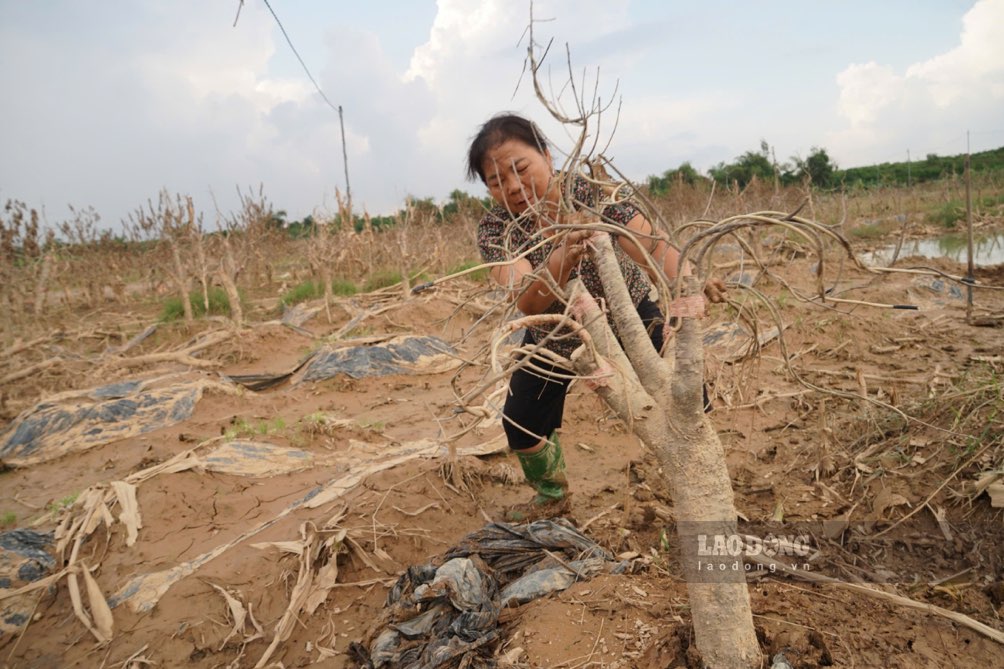
Ms. Hong said that the garden has more than 1,000 peach trees, with an investment capital of about 700 million VND, an average of 300,000 VND per small embryot, including materials and care costs of up to 600,000 VND.
The historic flood caused her entire family garden to be deeply flooded, trees died en masse, only a few young branches were left with roots, the loan amount approved by the Farmers' Association that had not yet been paid in principal now has increased in interest.
"I can't survive, and the growers can't afford to stick with the job anymore. I'll probably only grow corn next season to have food to eat every day," Ms. Hong said in dismay.
According to statistics, the whole area has about 200 hectares of peach trees for Tet, most of which are severely damaged, many households are left penniless, and no longer able to reinvest in production.
A few households no longer dare to borrow more capital, peach growers have to switch to short-term crops, raise pigs, grow corn, considering finding a new way to make a living after 2 consecutive years of struggling to bear the damage.
Once the largest peach growing village in the mountainous city of Thai Nguyen, but after many floods, hundreds of farming households were in debt and exhausted to make a living.

The peach growing profession in Cam Gia village has been around since 1990 with about 100 members. The number of peach trees is over 30,000, of which, ancient peach trees have over 5,000, old peach trees and large peach trees over 10,000, the rest are peach branches and bon sai.
Peach blossoms here have been granted a collective trademark certificate by the Department of Intellectual Property (Ministry of Science and Technology), recognized as a typical agricultural product of the province for many years.
Some recorded images:
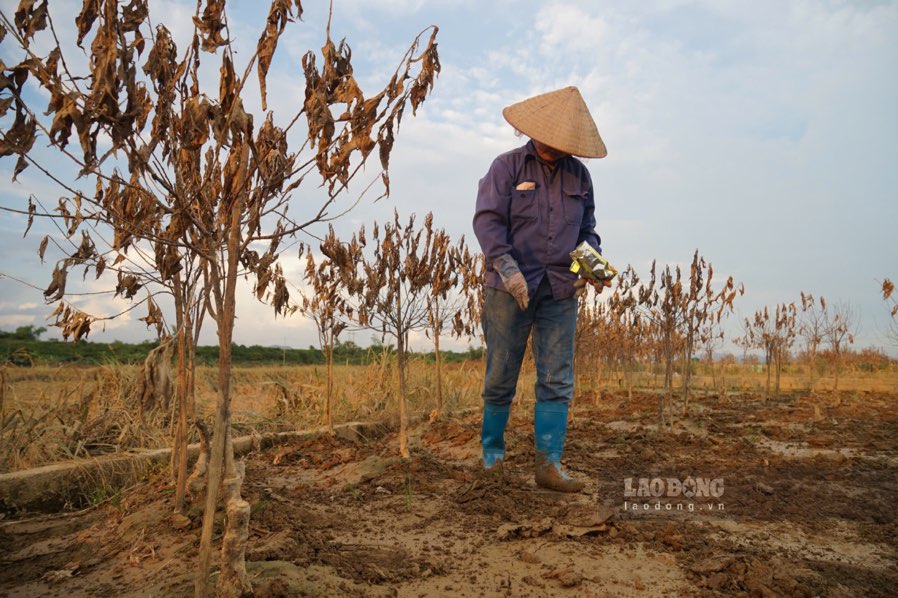
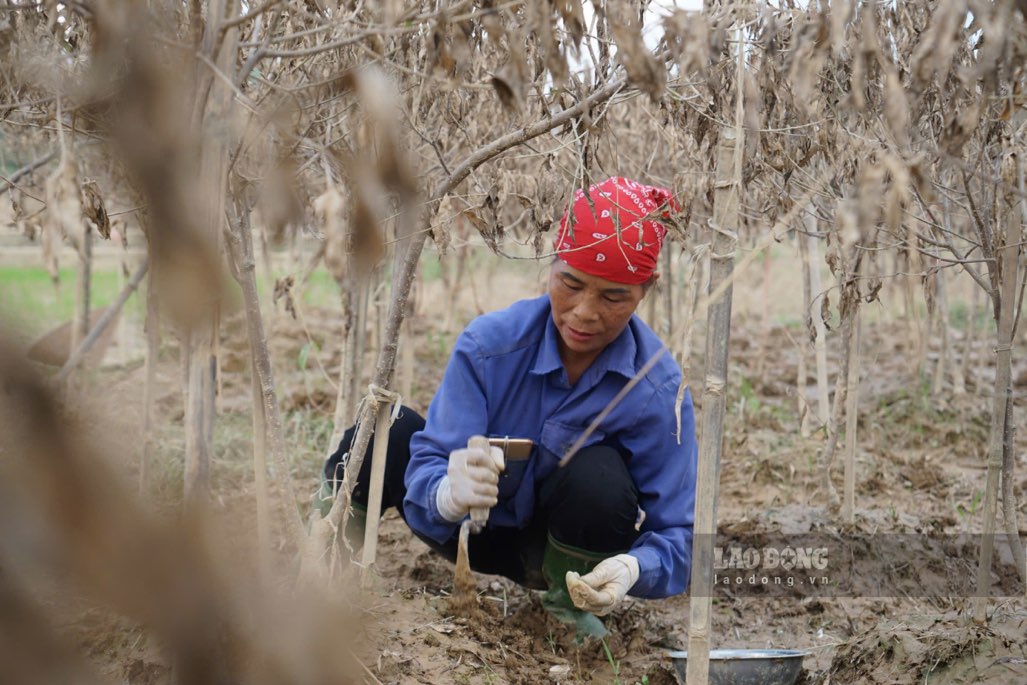

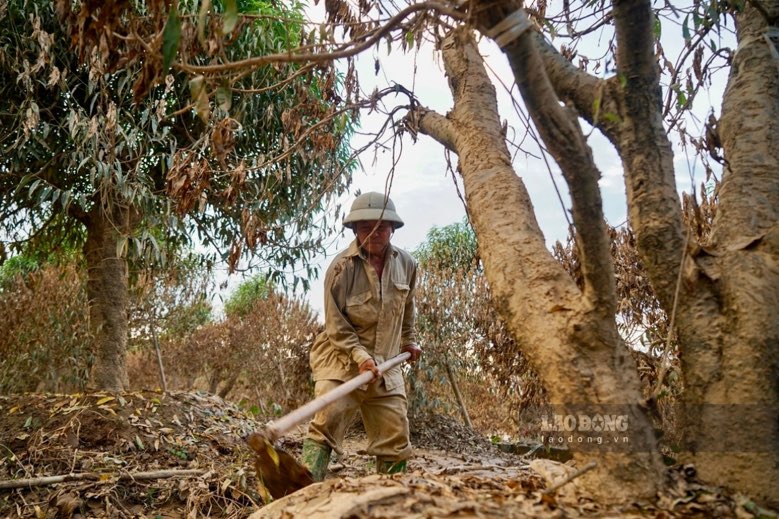
According to the Department of Agriculture and Environment of Thai Nguyen province as of October 22, storm No. 11 ( Matmo) has killed 7 people and injured 3 people, causing damage of more than VND 12,600 billion.
Regarding housing alone, about 200,000 houses were affected, of which 151 houses collapsed and were completely damaged; more than 1,500 houses were severely damaged and more than 69,000 houses were flooded.
The agricultural sector suffered great damage, with more than 14,822 hectares of crops flooded and damaged; nearly 904 hectares of aquaculture ponds and over 2 million livestock died and were swept away by water.
In addition, many household assets such as cars, motorbikes, etc. of the people were flooded and severely damaged, many shops, commercial areas, warehouses, goods and equipment of enterprises were also seriously affected.

